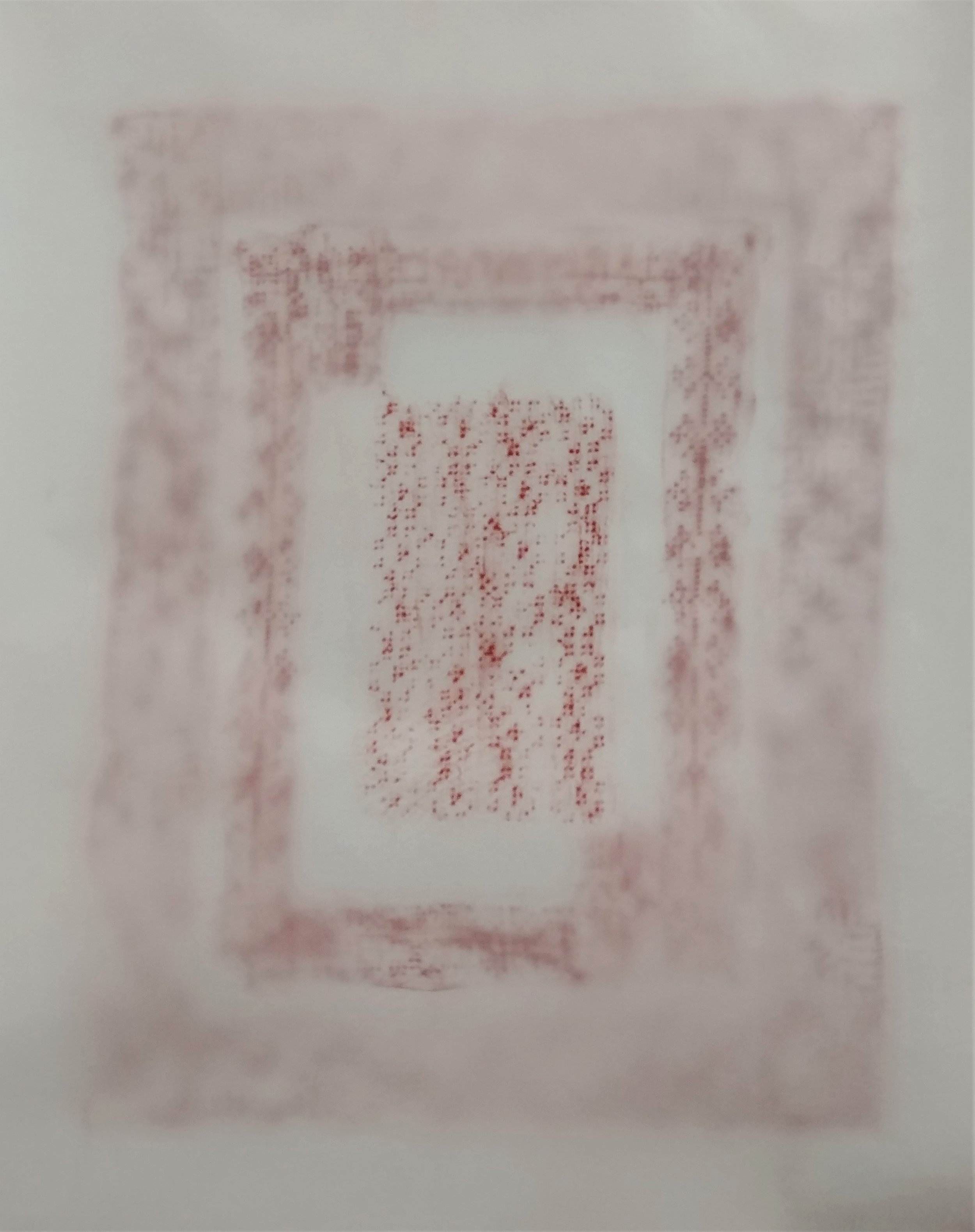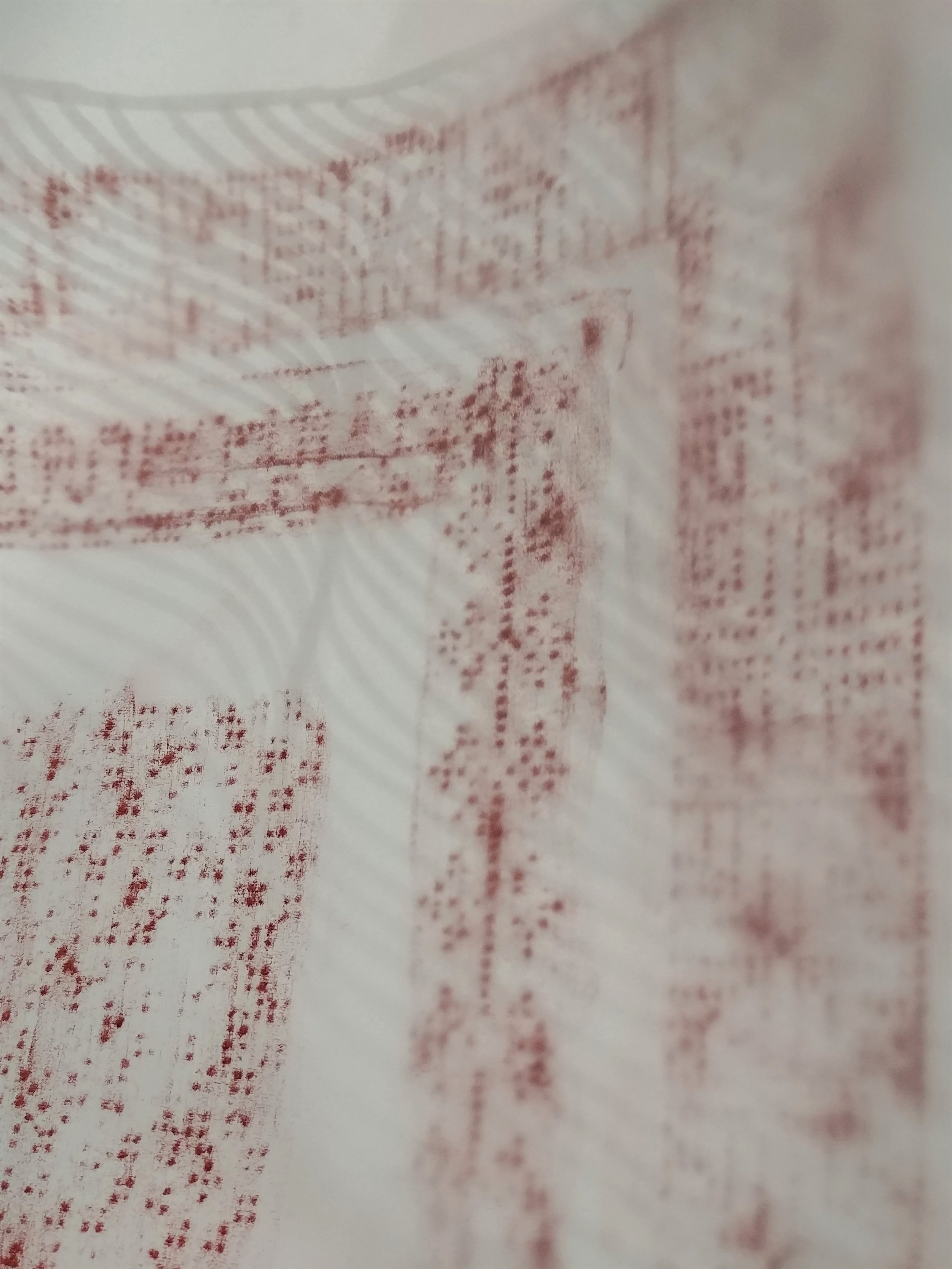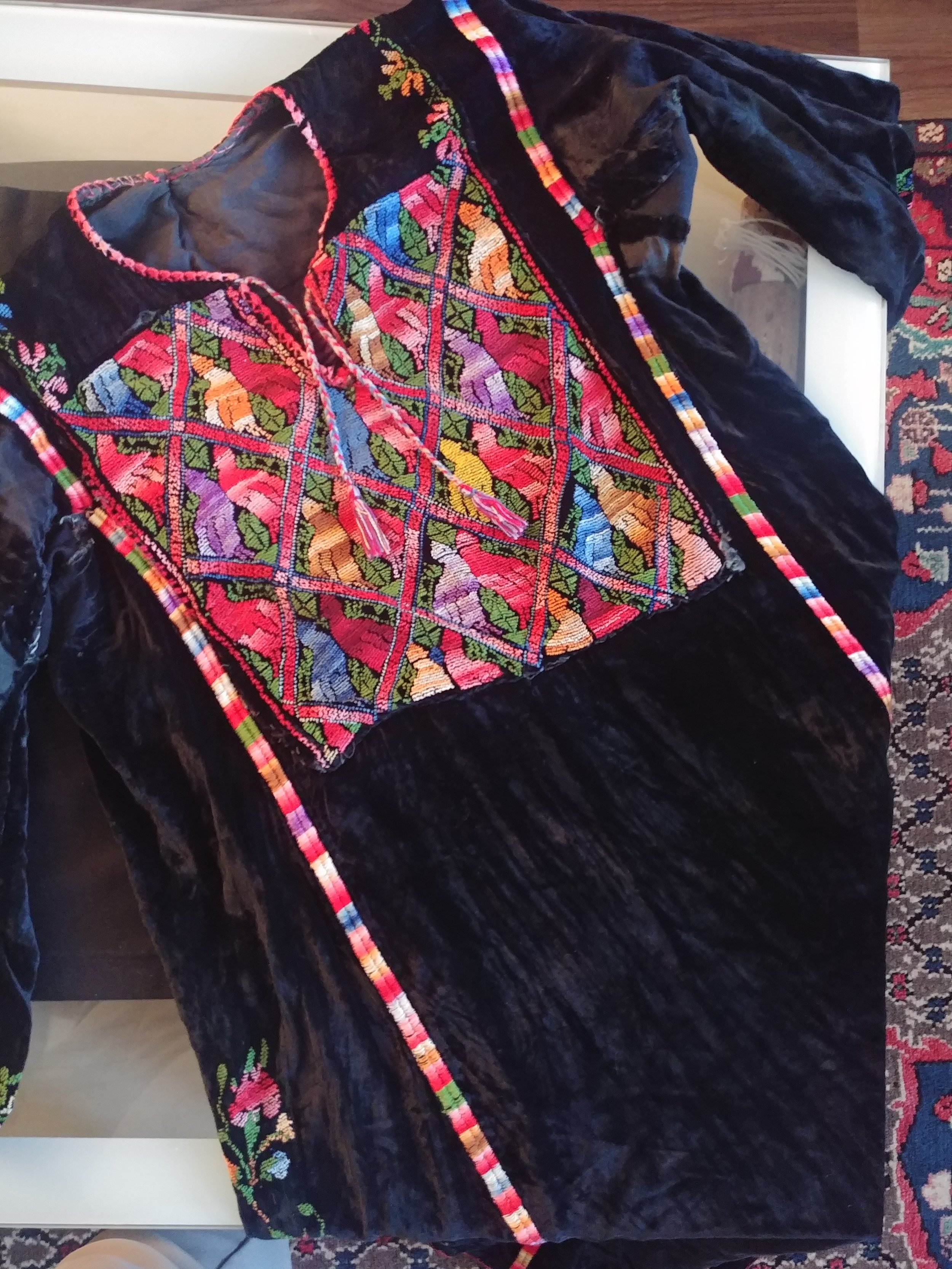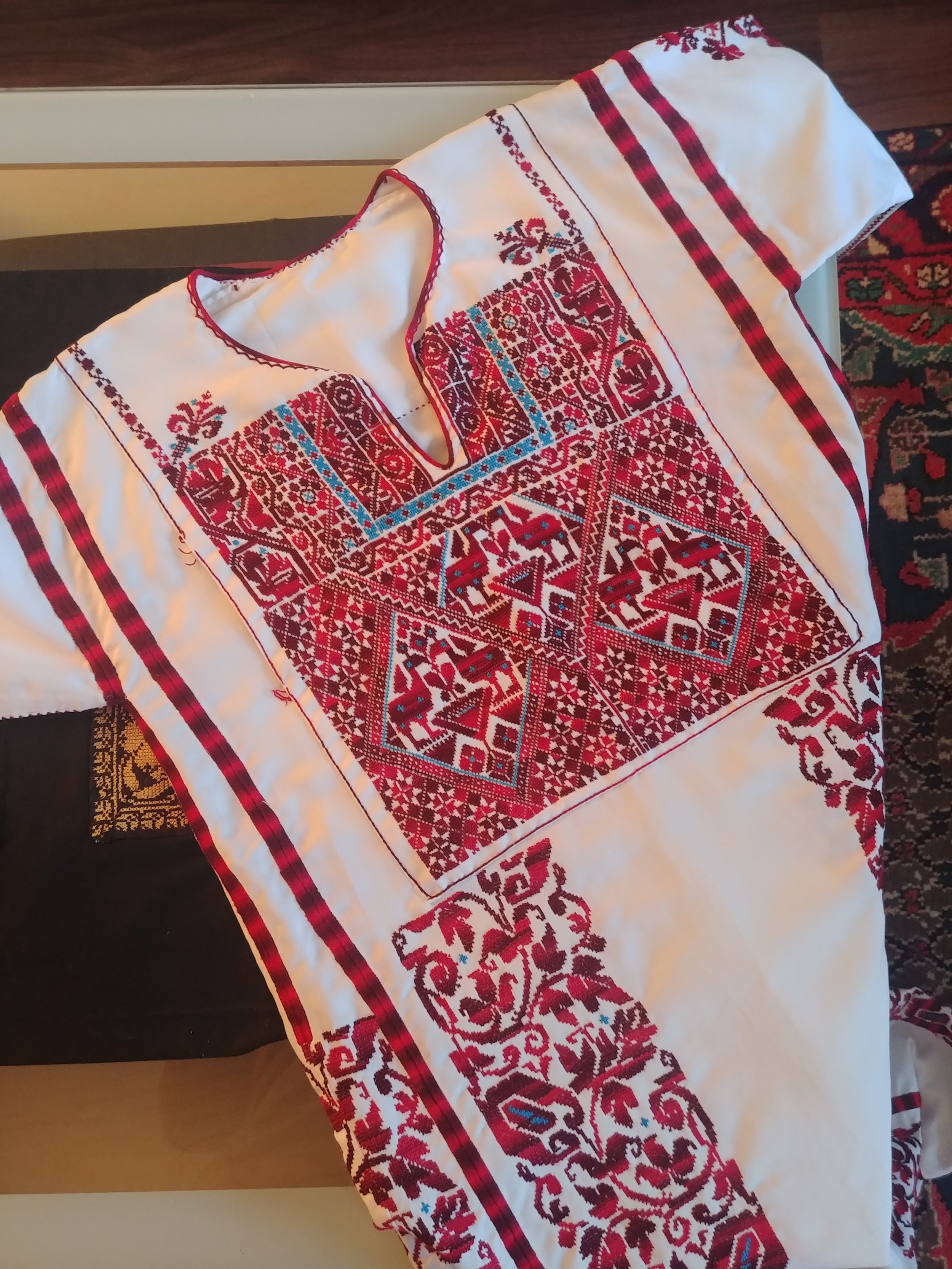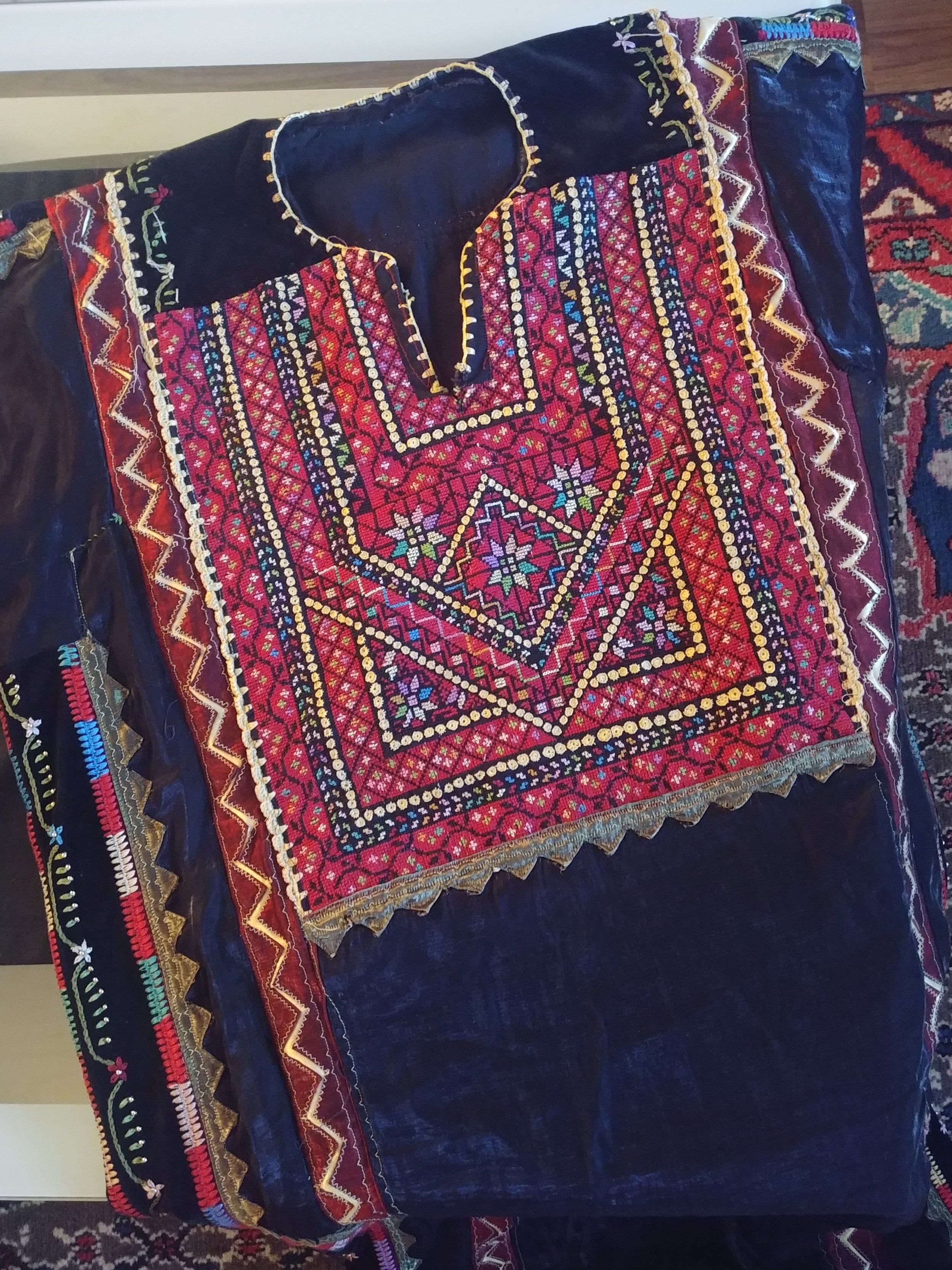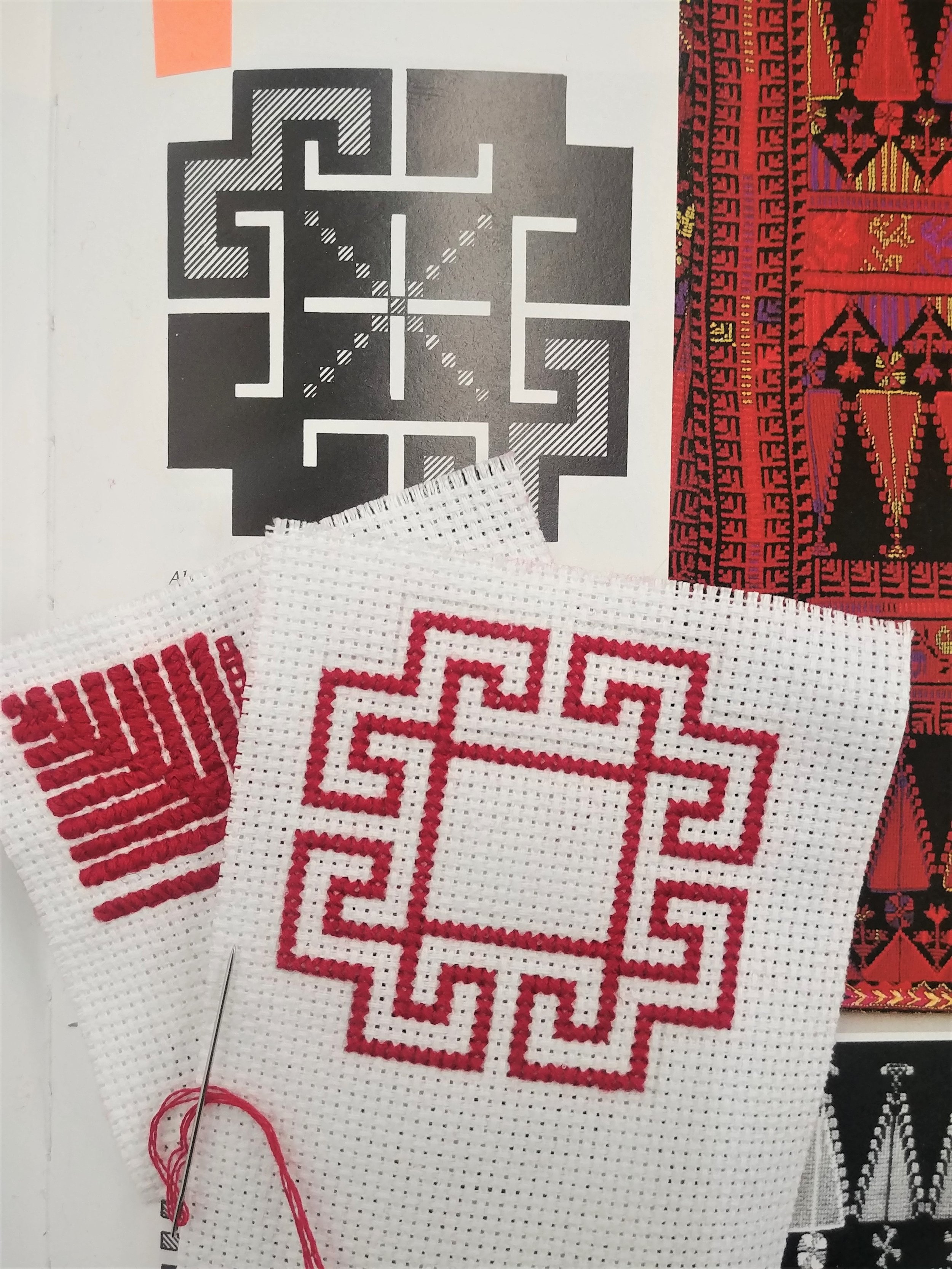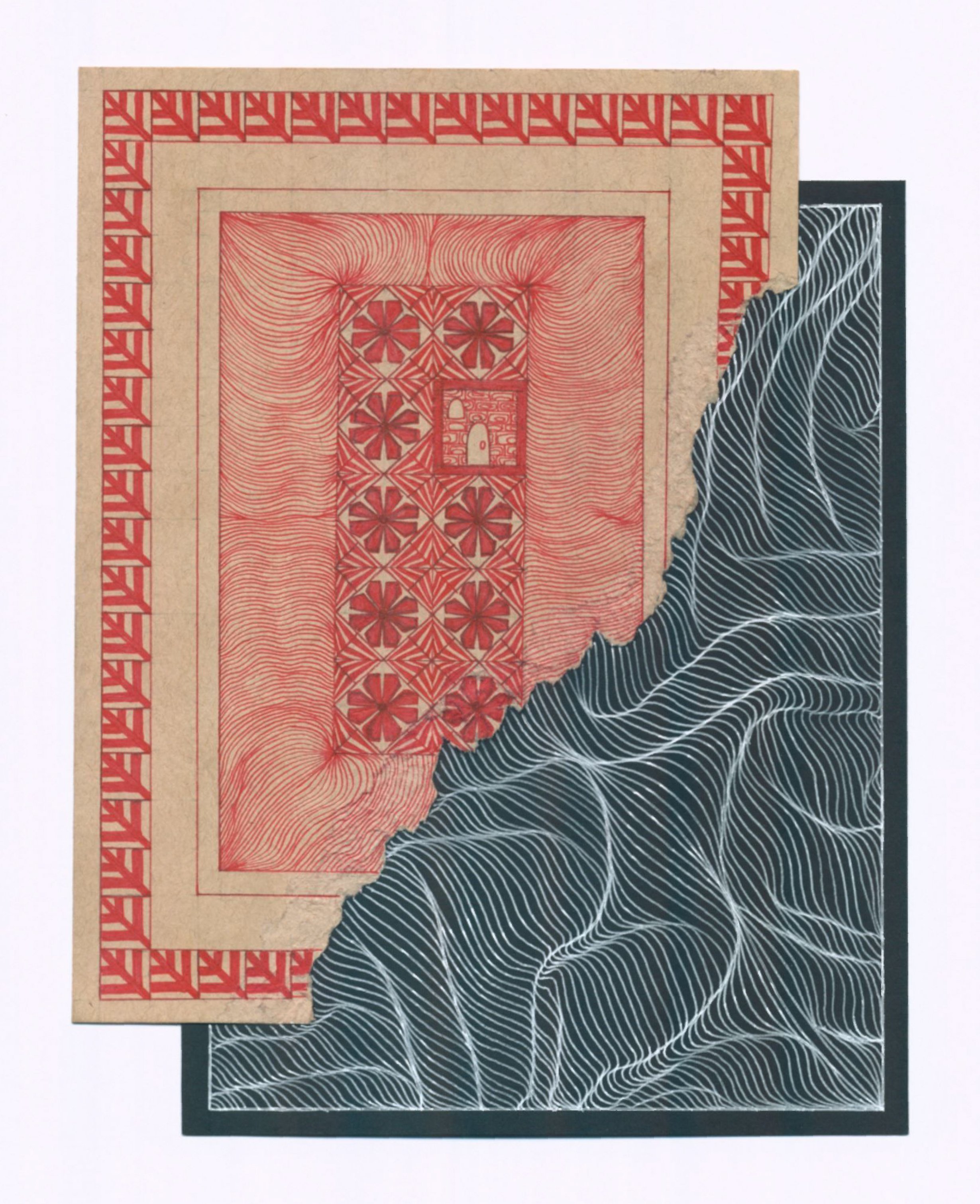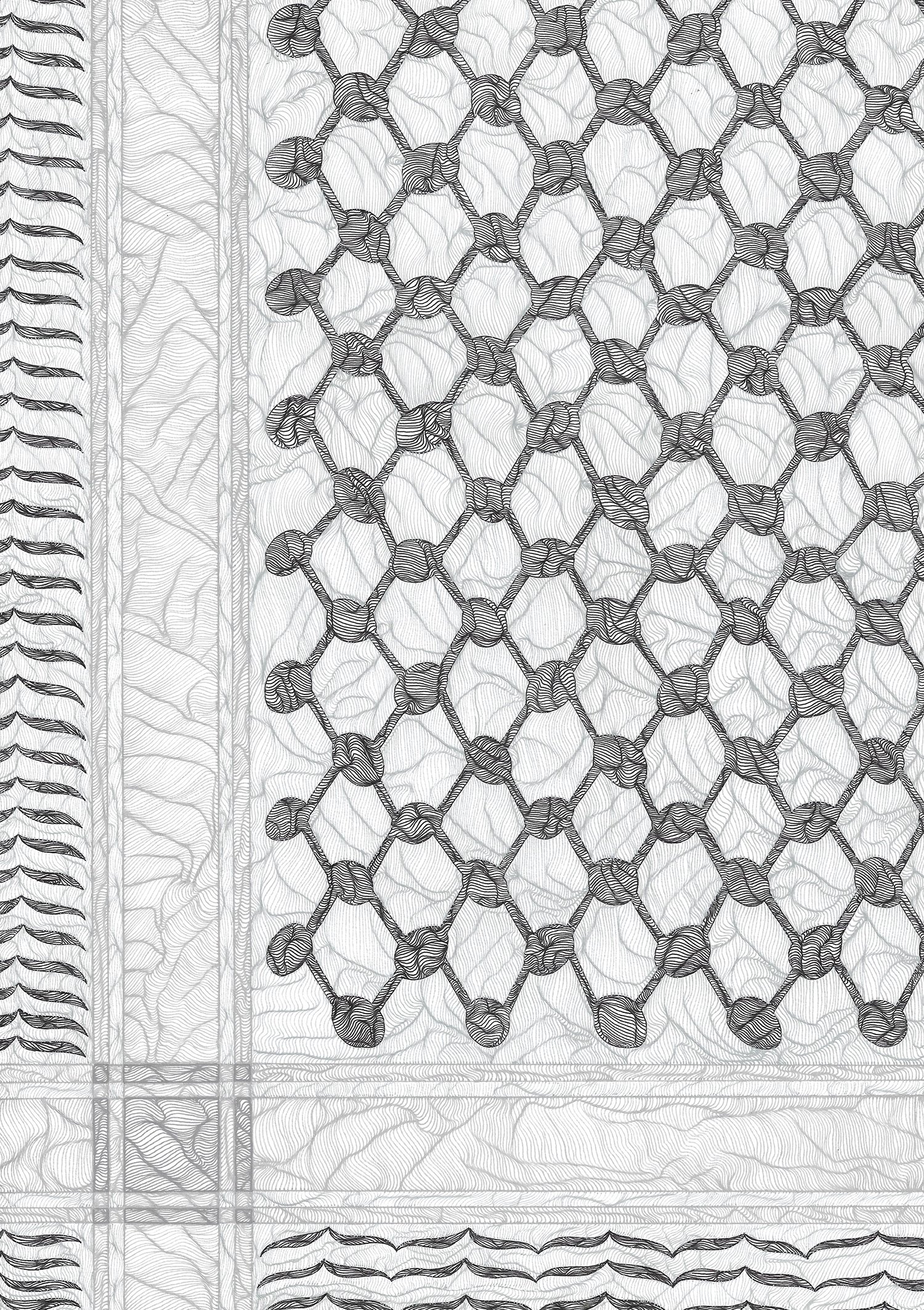Rawan Hassan - Remote Research Residency Archive
September 17th
A Busy Mind’s Lingering Ideas
“I am a part of Being to the degree that I go beyond it” - Frantz Fanon
So much of what defines us Palestinians is the ongoing occupation and struggle against colonialism. Even the everyday interactions of meets and greets usually entail questions and “needed justification” and explanations of who we are and where we are from. “What are you?” is unfortunately a recurring question used by strangers. What not who. The choice in words really signifies that we are seen so little. It is a defining introduction that is reductive and limiting. It's as though we are to remain defined by colonizers.
Unseen by the many, we have a future, a collective evolution and self defining growth. It is here that the ideas around futurism are integral. Especially when it comes to conversations around identity in the Palestinian community. Looking beyond the occupation, who are we? In the future when we are free who will we be? (Source)
I have been reflecting a lot on these questions. As I continue to develop on the project through this residency and my own personal growth both as an artist and being, questions of an envisioned possible futures strike me to the core. What does it mean to confind into the unknown? Especially in the arts, how do we make and contextualize concepts that acknowledge the past and present but also create a yet to be experienced future? The beauty in the answer of such a grand question is there is no answer, we are limitless in the ideas of what could be over what has been and what currently is. Our imaginations are now unbound by the constraints of colonialism and the ongoing occupation.
Some would argue that then we create idealistic ideas of what will be. Which is a fair argument, however I would argue given all the limitations that we are placed in now, wouldn’t dreaming in unlimited ways then be an act of resistance? The act of envisioning futures then becomes a new sense of hope, a looking forward that demands for change in the present.
“Palestinians quite literally wield the idea of the past, in the present, in order to determine their future representations.” - Marya Hannun (Source)
Sugarless Trunks / Sweetened Palms
Fruitless were the palms,
For there were none to share,
All was taken,
Empty baskets remained.
When did you know it was lost?
Out of grasp,
We lost touch, hands slipped through.
But a heart remained,
Folding out into new leaves,
For a whisper came to be,
Subtle as it was, it resisted,
Creating a new sweet,
A sugary hope as natural, stayed between.
What then does this mean for art? For artists? As cultural producers that present questions through creative methods of making, how do we make work that encapsulates envisioned futures?
Through my own practice I have yet to comprehend how to even begin unpacking that question. I am fascinated as time passes what it is I will make, that will even attempt to try answering let alone presenting such a question. Right now, at this very moment, I find myself at a moment just before a moment. A spark has been lit, just before the light has gone ahead. This stage of thinking, rethinking and questioning of what could and will be, is beyond nerve racking and exciting. Nothing is guaranteed, nothing is known and yet I find myself at a desperate need to carry forward. I crave for so much more; I want to work bigger and with greater, more elaborate ways of making. It is as though my breath is being held with anticipation and when I am ready to exhale there will be…..
July 22nd
No How Tos – Expectations/or/Self Making
Lately, I have been feeling like I am not Palestinian enough and have been hesitating in telling people what my ethnicity is. Though my name suggests to people that I am clearly not originally from so-called “Canada”. I see them contemplating whether they should ask me where I am from or not. Before they can I have been changing the topic and dragging their attention elsewhere. I remember back in high school doing the same, it wasn’t until during my undergrad that I truly started embracing and holding my culture and ethnicity with great pride.
So, why am I reverting back to tucking away a crucial aspect of my identity?
So much of my ethnicity was/is heavily reliant on the Palestinian company that I kept/keep. But now with recent changes, recent decisions, and recent paths being taken; my perspective has been shifting into something not yet fully understood. Its as though I’m too Palestinian for Canadians and not Palestinian enough for fellow Palestinians. Which brings into the question the idea of expectations.
Expectations within any community, will forever be the downfall of who we are individually. While ultimate individuality will always hold the curse of isolation. Either way, a true balance between the two realms will be a constant struggle within.
Which then begs the questions, how do we be Palestinian and be our own selves? Am I an artist who happens to be Palestinian or a Palestinian artist? Do I have a say in the matter?
Light holds, and let’s go, an easy breath,
Carrying a feathering beyond sight,
For without such a force, there is none that blooms,
A true carnation layered as it might be,
Won’t be, unless you and I speak thoughtful words,
For we consume beyond measure,
Like the fruits of labour that comes, a shared kindness can be,
For we are eaten,
Like apples at the core,
Nestle together to build something more
A leftover for the roses to steam from,
Now cut for the taking.
For I too care for you,
Same as you care for me.
Recently finished a tatreez (embroidery) piece. I am both excited and saddened to have the piece done. There’s something so satisfying about the hand movement of pushing the needle in and out of the Aida cloth, creating visual elements with each cross-stitch made. A breathing motion comes into place, as though there is an intimacy in the crafting. The craving to move on and make another piece is strong, and yet I need to rest my hands and allow myself to process what was just done. Allowing that breathing motion to simply now take in breath.
I definitely broke a few rules while making the tatreez piece, took a few liberties with the pattern designs, along with the over layout of the embroidery work isn’t as traditional as some would probably like. But I have never been one to ever fully follow instructions.
After being done with the yet to be named tatreez piece, I began using tracing paper and rubbed charcoal with the tatreez piecing situated underneath the tracing paper. I wanted to create a visual representation of the embroidery that seems vagally resemblant of the original but also looks derived. To the point that it could never truly replace the actual embroidery work. I think the end results came out the way I wanted them to. I want to continue exploring this realm, and create a light box for the layering to shine through.
Among all that has been done so far, there is something more I want to do with creating impressions of the embroidery work. I have this idea I can’t seem to get rid of, an idea of creating an embossed imprint of the patterning onto naturally dyed fabric. After it is set, I want to either draw on it or print on it an intense amount of line work. Something about the idea keeps lingering in my mind.
June 13th
Mourning and Relief – Taken and Reclaimed
For the past few weeks, I have been continuing to embroider but have also been dipping the embroidery work into bleach. There is a strange sensation watching the textile work be stripped of its vibrant colours and left bare. As though a cruel act has been imposed onto the fabric, one that can’t be reversed or truly fixed. The sense of mourning comes in, all that hard work of cross-stitching for countless hours to build something that feels of a multitude of cultural significance, now has lost a key element that makes it true to its nature, its colour.
Mourning is a daily experience for us Palestinians. Every day I wake up, check my phone for the current news of the ongoing occupation of Palestine and every day a new face emerges, with the article or caption usually beginning with “Young child shot dead on the streets of….”.
The cold truth of being a diasporic Palestinian, is that no one outside of the Palestinian community cares. We are often told “this isn’t the place or time” “I don’t want to hear about such heavy things” or “why do you always talk about Palestine?”. The evident choice to ignore Palestine and the ongoing Palestinian struggle, leaves us mourning on our own, isolated. Left to be continually stripped of our colours, bare and ignored. With the expectation of us to blend in with the rest, and remain quiet with a forced smile on our faces. The daily experience of mourning is forcibly silent.
Looking for relief then becomes a challenge, there needs to be a form of reclaiming or rebuilding in order for relief to be true. I tried dipping the embroidery work into fabric dye after it was bleached but I found the process unsatisfying. The process seemed hollow and the end result came out symbolically empty. It was here that I found myself stuck and unsure how to reclaim or rebuild the fabric.
Is any form of relief possible when there is no end to settler colonial violence?
I had the honour and privilege of speaking with Samar Hejazi https://www.samarhejazi.com/. Her work really speaks to me on multiple levels. The way she embroideries and pulls apart her work, allowing the tight knit cross stitch work to breathe and takes on new non- “traditional” embodied forms. Bringing into questions around displacement, colonialism and the Palestinian culture internally, truly inspires me.
We chatted about colours, and how the performance of colours are constantly communicating. Along with the importance of learning and unlearning rigid old school conservative cultural ways of making, especially in making art; and allowing for experimentation to flow, breathe and happen naturally. She explained to me how the natural dyeing process works and might have a better impact on my work over the fabric dye. We also chatted about the experience of being a diasporic Palestinian, and the felt need to hold onto culture, and yet there is an unspoken need to question and think critically of our culture. A need for allowing things to evolve and change internally.
Taking her words to heart, I started to do research into the natural dyeing process. The process almost seems like a chem lab experiment with a DIY feel. It also seems long and borderline tedious. And yet I am excited to go forward with it. There is a grounding of sorts that allows the fabric to be taken care of and spent time with more intentionally. Maybe it is wishful thinking for the process, I just have to go forward with the idea and see.
I have also been thinking a lot about the back of the embroidery work as well. Seeing where the needle has been, on the unseen side of the fabric, traced out by the thread. It is as though a road map has been created. One that is often ignored, but still holds a presence of unshared value. I am unsure where the idea is going or if it connects back to relief and reclaim. Maybe it has everything to do with rebuilding? Maybe it has nothing to do with it? Either way I am intrigued by the idea, and want to see where the road maps lead.
As a result of my curiosity, I have begun recreating the needle and thread’s movement; while staring at the back of a finished embroidery piece. It was a strange process of non-linear structure making that somewhat makes a figure at the end. In terms of next steps, I am thinking of scanning the back of my soon to be completed larger embroidery work and see what I can create with the scan. Honestly, here the possibilities feel excitingly accumulating endless.
Reflecting on it all, maybe there is no answer to relief, reclaiming or rebuilding. There is simply just the question of, what if? Something to consider as I continue to grow my practice and material exploration. There doesn’t need to be a straight forward answer, there are too many nuances involved in the Palestinian struggle both externally and internally for there to be closed statements of how to.
May 23rd
Initial Thoughts – Reintroduction
There is a particular subtle power to textiles that often goes unnoticed, unlike statutes, buildings and other built structures, fabric can’t as easily be torn done. Fabric can expand, be hung, dominate a space asserting attention of all that comes through; or it can be folded up, made as small as possible, and discreetly put away. It then can be taken away from its origins, and placed in refuge elsewhere. No other material can hold up so much space and be removed so quietly. There is a daily life of domesticity that also carries a delicate powerfulness to fabric that no other structure can sustain. Textiles-work, share with us their soft textures of grandeur and yet remain humbled by the daily life narration of a family’s generational home.
This is why textiles have always intrigued me, especially in the Palestinian context. For us, textiles have become not just statements of cultural ornamentation, they also have evolved into political statements of origin, a narration of our lineage, connections to the land directly, and ongoing resistance. The fabric production in Palestine and in the Palestinian diaspora, both artistically and craft-wise carry with them meaning beyond aesthetics; they have evolved into something yet not fully understood, something more.
I recently got the privilege of getting to not only see but to also hold three tobes, having only seen pictures or from others Palestinians wearing them. Getting to actually touch them and see them up close was an exhilarating experience, it was like holding onto a long-lost personal item. Though I don’t not have any direct personal connection to these articles of clothing, the feeling as though I did, held strongly. It was Rehab Nazzal who generously showed them to me, she bought them while in Palestine and brought them with her, here. They too now stand in a home, far from home. Though they are no longer in their origins, they are not in a museum and not in glass casing. They remain showcased outside of objectivity. Maintained in their intended domestic setting.
Within an open setting, the tobes then allow us to go beyond looking, and to truly see them. The fabrics used, the cross-stitching, the embroidered patterning, along with the physical weight, details that go amiss when we objectify with glass casing, when we only look. Being able to see them allows for more open interpretation, but also for sentiment and meaning to evolve organically. I hope, maybe one day I can recreate those visions of seeing, over looking into my own body of work.
Currently, I find myself in a process of reintroduction as I progress in my research. Having begun teaching myself how to embroider with Aida cloth and thread, my hands are at a comfort. As though they have been here before. Even the collection of readings about the dyeing process, the meaning of colours, the symbolism of the embroidered shapes, the woven fabrics with looms, the old and new import/export systems; are all new knowledge now acquired, that doesn’t feel anew. Instead, there is a sense of we have been here before. Maybe it is from growing up in a household surrounded by hung Palestinian ornamentation, that as a child I paid little attention to. Maybe it is derived from the longing of wanting to be closer to my culture. Whatever might be the answer as to why this feels like a reintroduction, it is certainly coated in emotions of morning and relief.
Book used: Palestinian Costume by Shelagh Weir
Source of Image Fabric: https://collections.textilemuseum.ca/collection/5029/
Through this residency I am exploring the notions of identity and evolving traditions, through fabric and embroidery patterning. Specifically the diasporic Palestinian experience of the struggle to hold onto identity, and Palestinian traditions around fabric production. In Palestine fabric production and embroidery work hold a lot of cultural significance. The patterns indicate where in Palestine someone is from, along with their own personal journey. It is these elements and traditions that I am exploring and expanding on, through the lens of the diaspora.
RAWAN HASSAN
Rawan Hassan is an artist based in the unceded traditional territories xʷməθkʷəy̓əm (Musqueam), Sḵwx̱wú7mesh (Squamish), and səlilwətaɬ (Tsleil-Waututh) Nations, (in so called “Vancouver, Canada”). Her artwork explores realism and the abstract, through patterning, linework and pencil drawings. Her goal is to create work that reflects the cultures, experiences and perspectives she grew up and continues to evolve with. She is also interested in creating work that reflects the world around, while also creating possibilities of what could be.






